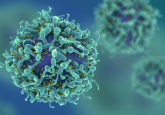Aberrant glycans demonstrate promise as disease biomarkers
A new study using a ‘bottom-up’ approach highlights the potential of detecting glycotransferase activity and glycan branching as biomarkers for the diagnosis and treatment of various cancers.
Chad Borges, from the Biodesign Institute, Arizona State University (AZ, USA), and a team of scientists have recently linked the aberrant formation of glycan molecules to a range of cancers, including ovarian and prostate cancer. The study utilized GC and MS to detect aberrant glycan formation in plasma samples, which is linked to the aberrant expression and activity of glycotranferases. It is hoped the method can be employed for earlier diagnosis and more effective treatment of cancer.
The study compared 30 archived plasma samples from 30 lung cancer patients and 29 non-cancerous control samples, which matched by age, gender and smoking status. The scientists attempted to track the immediate upstream cause of aberrant glycans in the golgi and endoplasmic reticulum: the glycotransferase activity in the samples was inferred by analysis of the glycan node levels, and detected using GC and MS. The analysis could diagnose lung cancer from the samples with 76–88% reliability.
“Most glycomics efforts look at intact glycans, but often this is not a good molecular surrogate for the activity of glycotranferases because glycotranferases work on hundreds of growing glycan polymers,” Borges says. “Our new bottom-up approach looks at glycans in a different way.”
The detection of aberrant glycans through the simultaneous analysis of glycotransferases using GC and MS shows potential in exploiting glycans as disease biomarkers.
Borges and the team plan to further this research by obtaining more information from larger data sets to develop disease-specific biomarkers and improve the effectiveness of the method. They also intend to enhance the sensitivity of the test by applying and developing it to cancerous fluids and tissues.
Source: Borges C, Rehder D, Boffetta P. Multiplexed Surrogate Analysis of Glycotransferase Activity in Whole Biospecimens. Anal. Chem. 85(5), 2927–2936 (2013).





